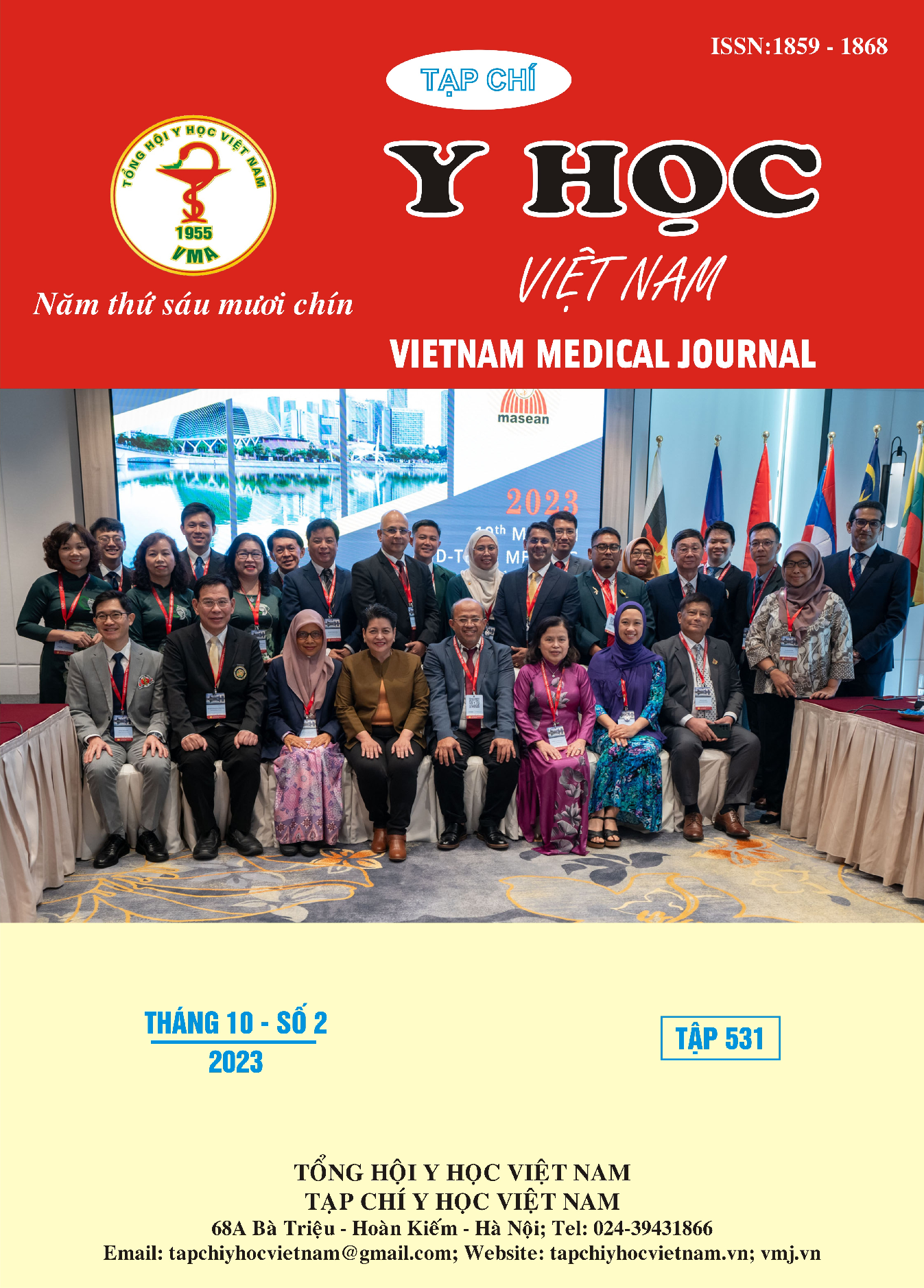CHANGES HEMODYNAMIC PARAMETERS IN SEVERE BURN PATIENTS IN THE PERIOD OF BURN SHOCK
Main Article Content
Abstract
Objectives: Evaluation of changes in hemodynamic parameters in severe burns patients in the period of burn shock. Subjects and methods: Prospective study on 45 adult burn patients (16-60 years old) in burn shock stage, without comorbidity and cotrauma, with burn >= 30% of total body surface area (TBSA), hospitalized within 6 hours after burn, inpatient treatment > 3 days at the ICU, National Burn Hospital from January 1, 2021 to October 31, 2022. The hemodynamic parameters were measured using a USCOM version 2.0 machine manufactured in 2009 with a continuous Doppler ultrasound probe frequency: 2.2 MHz (made in Australia). Results: The mortality rate is 35.56%. At the time of admission, parameters of CO, CI, INO, SV, SVI, SVV and FTc mainly decreased; in contrast, the SVR and SVRI parameters mostly increased; SVV and SVR have a positive, moderate correlation with mortality. Hemodynamic parameters gradually returned to the normal range during treatment. After 48 hours of hospitalization, the number of patients with normal INO values in the survival group was significantly higher than in the death group (p < 0.05). After 72 hours of hospitalization, compared with the death group, the number of patients with SV and SVI values to normal was significantly higher in the survival group (p<0.05). Conclusion: At the time of admission, the parameters of CO, CI, INO, SV, SVI, SVV and FTc mainly decreased. In contrast, the SVR and SVRI parameters were mainly increased. Hemodynamic parameters improved during treatment.
Article Details
Keywords
Burn, USCOM, hemodynamic.
References
2. Smith BE (2013) The USCOM and Haemodynamics. Learn Hemodynamics. Revisi, 5:1-20.
3. Cattermole GN, Leung PM, Ho GY, Lau PW, Chan CP, Chan SS, Smith BE, Graham CA, Rainer TH (2017) The normal ranges of cardiovascular parameters measured using the ultrasonic cardiac output monitor. Physiological reports, 5(6):e13195.
4. Zhao D, Huang X (2021) Critical care of the burn patient: the first 48 hours. Ethiopian Journal of Health Development, 35(3): 239-243.
5. Barton RG, Saffle JR, Morris SE, Mone M, Davis B, Shelby J (1997) Resuscitation of thermally injured patients with oxygen transport criteria as goals of therapy. The Journal of burn care & rehabilitation, 18(1):1-9.
6. Williams FN, Herndon DN, Suman OE, Lee JO, Norbury WB, Branski LK, Mlcak RP, Jeschke MG (2011) Changes in cardiac physiology after severe burn injury. Journal of burn care & research, 32(2):269-274.
7. Pham TN, Cancio LC, Gibran NS (2008) American Burn Association practice guidelines burn shock resuscitation. Journal of burn care & research, 29(1):257-266.
8. Martyn J, Wilson RS, Burke JF (1986) Right ventricular function and pulmonary hemodynamics during dopamine infusion in burned patients. Chest, 89(3):357-360.


